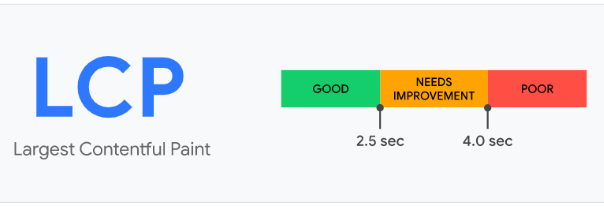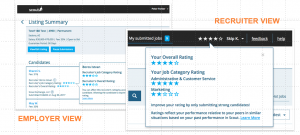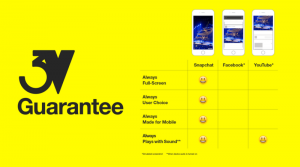Key elements of an effective retail SEO strategy including savvy keyword targeting, excellent UX, customer reviews and more.
With online spending at an all-time high in the UK, organic search is more important than ever for retailers looking to thrive in the new normal. However, building an organic search presence is difficult for online retailers, especially if you don’t have a business location to promote through local SEO or a healthy PPC budget to bring in paid traffic.
So, in this article, we look at how you can build an effective retail SEO strategy to overcome the challenges of driving organic traffic to your website.
Find organic keyword opportunities
As an online retailer, most high-intent product keywords trigger ads on search engines. So, when someone types in something like “Google Chromecast,” the top of the SERPs are normally going to look something like this:
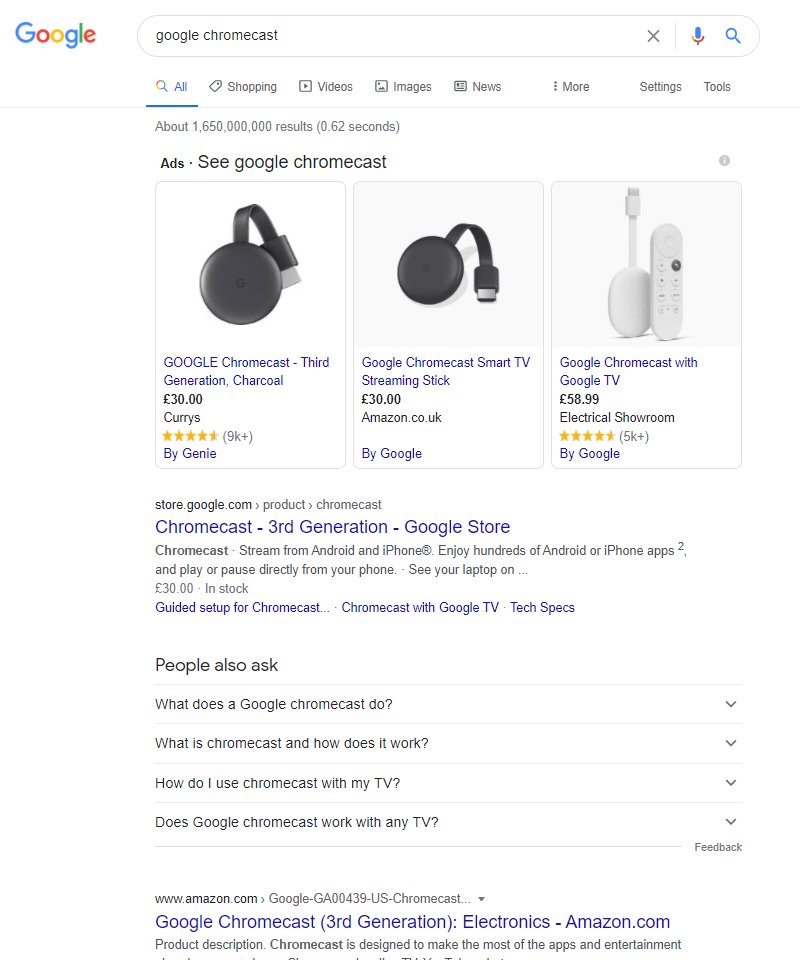
Here we can see paid shopping ads at the top of the results page and then a link to the Google Store as the first organic result. Then, we’ve got the “People also ask” section before we see another organic result for online retailers.
After that, there’s a succession of feeds for “Top stories,” videos and “Refine by Google Chromecast product line” listings with a single organic link from Currys.
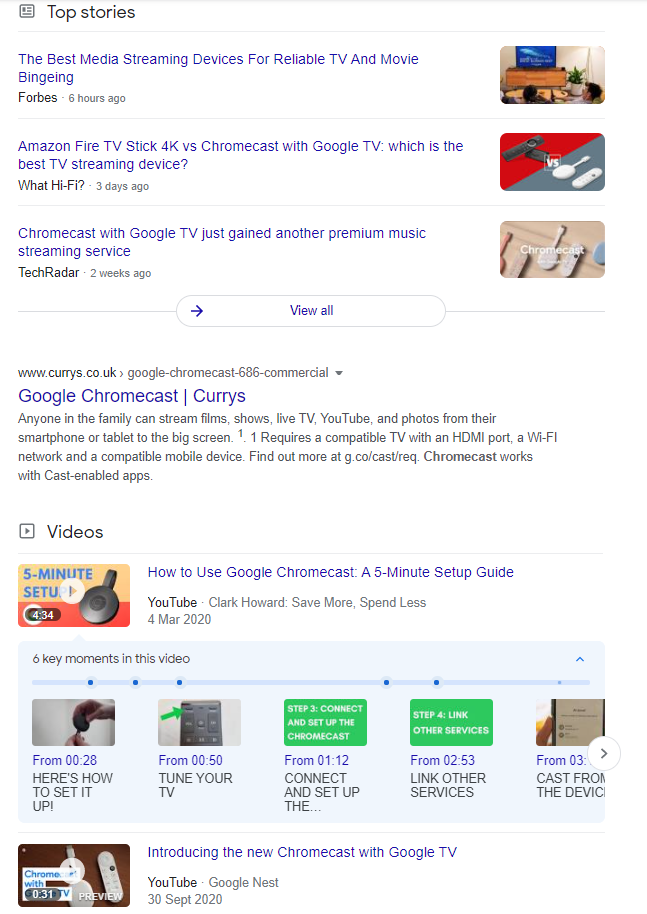
So we’ve got a high-intent keyword here that doesn’t offer much of an SEO opportunity.
This is common for top-level, high-intent and competitive keywords for online retailers because Google is very good at monetising these search terms with paid ads. So, while these are great keywords for PPC campaigns, they’re not always that helpful for generating organic traffic.
The bulk of your retail SEO strategy is going to focus on long-tail keywords that capture user interest at earlier stages of the buying process when they’re typing in lower-intent keywords that still demonstrate an interest in buying your products. Many of these keywords will still trigger ads but the informational nature of long-tail keywords encourages Google to place organic links higher up the results page.
Below, we’ve got a long-tail keyword that specifies a number of key selling points beyond the product itself. This user isn’t only looking for a 4K TV; they’re specifically looking for the best TVs for gaming on the latest-generation of gaming consoles, which brings factors like latency, refresh rates, colour accuracy and other technical considerations that this user needs to know about.
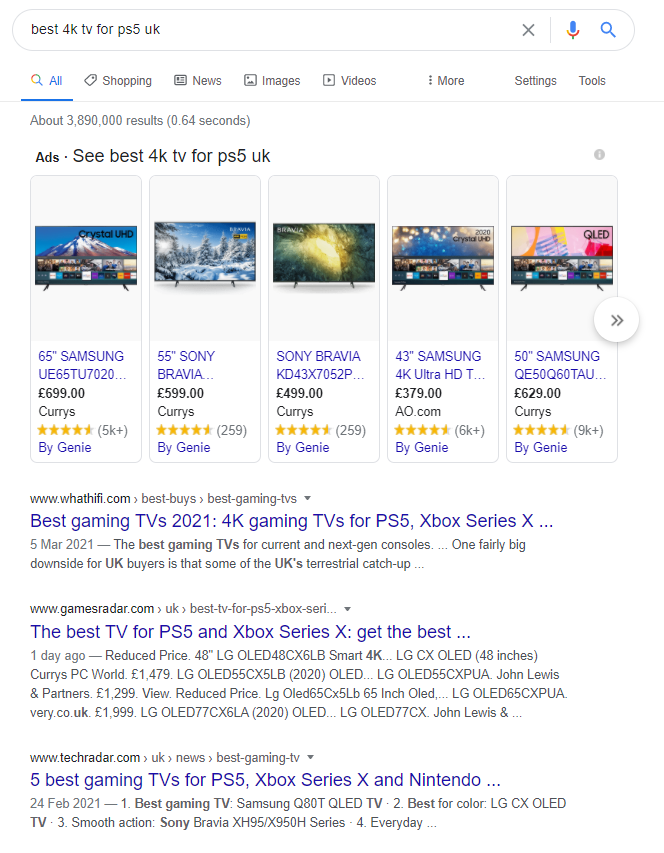
So, yes, we see another pack of paid ads at the top of the page, but the blue links come thick and fast after that. In fact, if we take a look at the full page, this SERP is dominated by blue links pointing to informational content – no top stories, video feeds or anything else pushing organic links down the page.
This is a search term that offers plenty of SEO value for an online retailer.
How do we apply this?
- Long-tail keywords: Prioritise these in your retail SEO strategy because this is where the biggest organic opportunities are.
- Produce the right content: You need to produce informational content to answer the questions posed in long-tail keywords – this isn’t something you can optimise product pages for.
- Keyword research: There are top-level, high-intent keywords that offer organic opportunities but they’re less common for retail brands and harder to find.
- Two-pronged approach: Focus your efforts on long-tail keywords to build traction faster while gradually working on more competitive queries.
- PPC integration: Online retailers (probably more than any other type of brand) need to integrate SEO and PPC into a single search marketing strategy to maximise coverage and ROI.
Organic product listings
Early last year, Google rolled out free product listings to help smaller retailers sell their products via organic search without paying for ads. The search giant originally planned to introduce this feature at a later date but moved things forward to help retailers deal with the disruption caused by the coronavirus pandemic and subsequent lockdown measures.
Free product listings rolled out in the UK in October last year.
These product listings can show across mobile and desktop, typically underneath paid product listings but they can also show independently by themselves, depending on the query,
To get free product listings showing in Google Search and Google Shopping, you need to create a Merchant Center account and upload your product feed. You can find the official documentation on how to do this here.
How do we apply this?
- High-intent keywords: Free product listings allow you to generate organic opportunities from high-intent keywords that are normally only available through paid ads.
- Search coverage: By showing in paid and free listings, you can maximise search coverage and increase your chances of winning the click for competitive keywords.
Customer reviews
Research shows that 91% of online consumers read customer reviews and 84% trust them as much as they would a personal recommendation. While separate studies show that the average customer spends 31% more with a retailer that has excellent review scores.
Google knows how important reviews are to online consumers buying from faceless retailers and this is why review scores are so deeply embedded into its organic and paid listings – because they increase CTRs and the likelihood of conversions after the click.
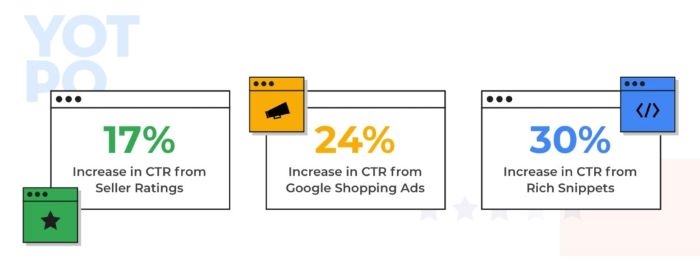
Seller ratings allow you to show review scores in your organic and paid listings in Google Search and Google Shopping, showing potential customers that you’re a reputable retailer to buy from. Unlike product reviews, seller ratings quantify the experience of buying from you as a retailer, which can give you a real edge if you’re known for delivering excellent services to your customers.
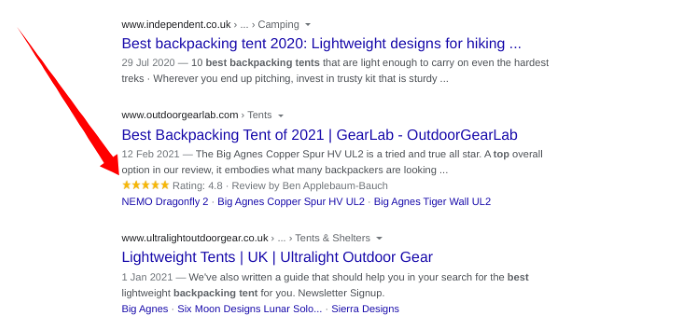
You can find out how to get seller ratings in our guide and learn more about the differences between seller ratings and product ratings in our comparison.
How do we apply this?
- Customer reviews: Build a strong profile of positive reviews from your customers – take a look at our how to get more Google reviews article for more info.
- Negative reviews: While negative feedback can be discouraging, they’re inevitable and an opportunity to show potential customers how well you deal with the occasional hiccup – find out how to deal with these in our what to do about negative reviews article.
- Aim for 4+ review scores: Numerous studies show that consumers find perfect review scores untrustworthy while scores of between 3.5-4.5 tend to achieve the highest conversion rates.
- Quantity matters: With reviews, quantity matters as well as quality with one 2019 report finding that customers expect an average of 112 reviews.
Page experience & Core Web Vitals
With Google set to roll out a new page experience signal in May 2021, user experience is about to become even more important for your search ranking. While we don’t yet know what the full impact of this algorithm update will be, online retailers could well be among the worst affected due to the performance signals Google is looking at.
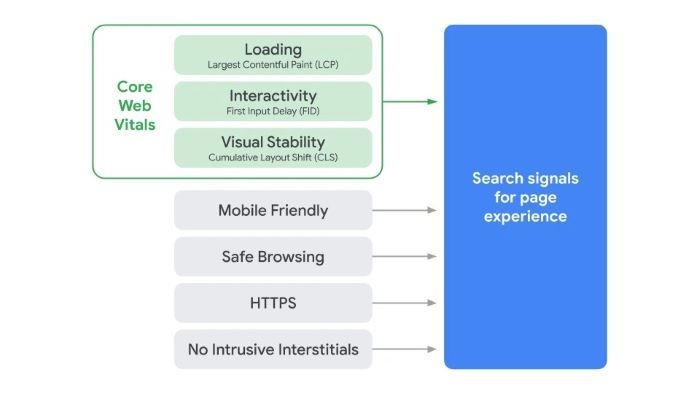
The top three signals highlighted in green in the graphic above are the new ranking factors Google is implementing in May while the four grey signals underneath have all been ranking factors for quite some time now.
So it’s those Core Web Vitals that are going to shake things up, if anything.
- Loading: This simply refers to loading times although Google is changing the way it measures this with a new standard called Largest Contentful Paint (LCP).
- Interactivity: Measures the responsiveness of interactive elements on your page (links, buttons, etc.) after users click them, using a new standard called First Input Delay (FID).
- Visual Stability: Detects the movement of elements after they’ve loaded on the page and any instability this causes, using a new standard called Cumulative Layout Shift (CLS).
We’ve looked at how you can optimise for Core Web Vitals in detail before but the point we want to make here is that eCommerce websites are particularly susceptible to suffering from poor performance across these three measurements – especially product pages and especially on mobile.

So, if your loading times aren’t up to pace (longer than 2.5 sec), interactive elements take too long to load (more than 100 ms) or elements move on the page after they’ve already loaded in the browser, you’re going to miss out on whatever ranking boost these signals offer to high-performance sites.
How can we apply this?
- User experience: Google has always cared about user experience but it continues to make it a more important factor in search ranking.
- Core Web Vitals: These provide new measurements for website performance and Google is also offering a new set of tools to help website owners measure and optimise for these signals.
Turn organic searches into sales
For online retailers, paid advertising is normally the key channel for bringing high-intent traffic to product pages and converting them into buyers. But a strong organic presence helps you capture a wider audience of prospects during the earlier stages of the consumer journey and influence purchase decisions through meaningful interactions.
Above all, these are prospects that will likely buy from someone else unless you establish an early influence in the decision-making process and this is where organic search shines as a long-term strategy that builds sustained growth.
Digital & Social Articles on Business 2 Community
(80)
